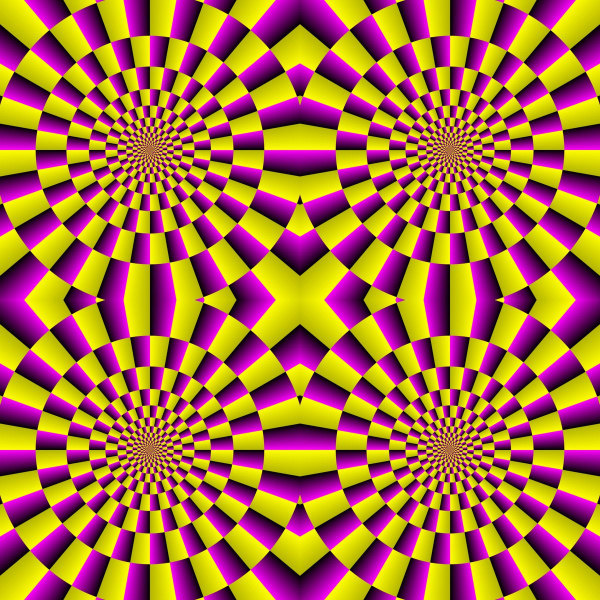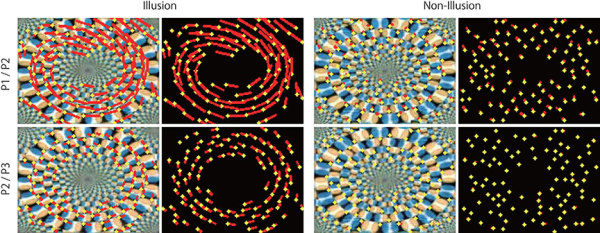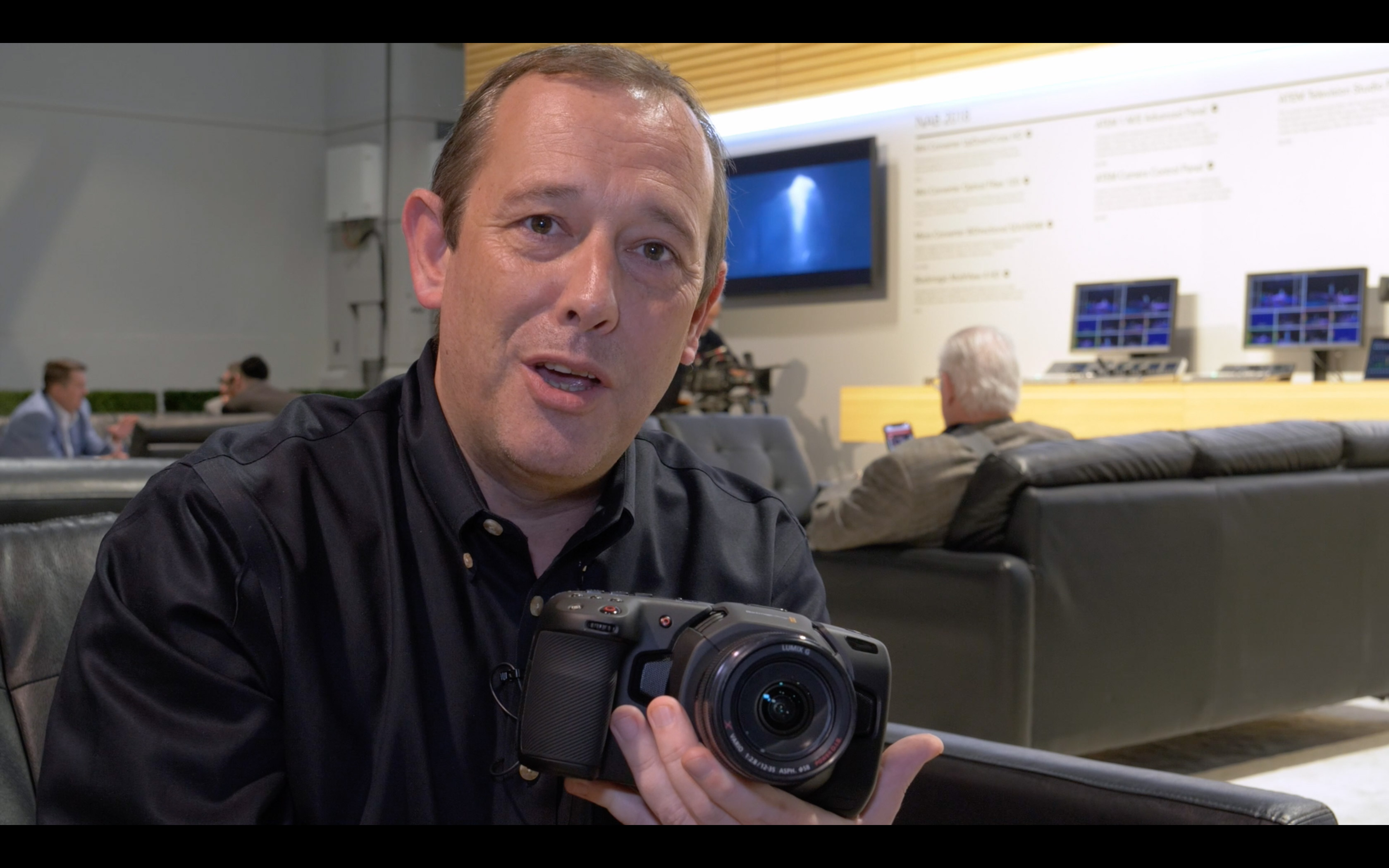[09:27 Sun,1.April 2018 by Rudi Schmidts] |
Many people still doubt that artificial intelligence could ever reach a level similar to human intelligence. The common argument for this: Our consciousness is indispensable linked to our perception of reality. And that "real" consciousness can arise in a network of simple mathematical formulas seems to most renowned AI researchers to be at most a confused utopian idea. Many readers may have seen the optical illusion of movement on the Internet. Here are two nice example pictures from   No, these circles do not rotate and are not animated GIFs. All pixels stand still, as can be checked very easily with a picker in Photoshop, for example. The human brain is simply deceived here with an optical illusion to interpret a movement in the image. However, only in places that one does not fixate directly with the eye, but only in areas that one perceives "in the corner of the eye". Interestingly, this applies not only to humans but also to some animals. Hard to believe? Here is an empirical proof: VY=S4IHB3qK1KU So let&s be clear: people and some animals see a movement in the picture with such motifs that objectively does not exist. One may therefore assume that an "objective" computer cannot fall for such an error. And that&s also true: If a sequence of such (same, still) images is analyzed by a motion tracker in a compositing system, the result is... nothing. No motion vectors are recognized. Logical. After all, nothing moves in the picture. But now it&s gonna be spooky... If you let the motion tracking of a neural network calculate then it suddenly recognizes motion vectors in the standing motif. In perception, it behaves like a human or cat and is deceived by the optical illusion:  What this could mean for our future, every slashCAM reader can now imagine for himself. deutsche Version dieser Seite: Neuronales Netz erkennt Bewegungsvektoren in einer optischen Illusion |





